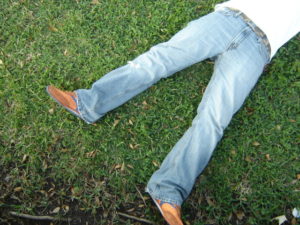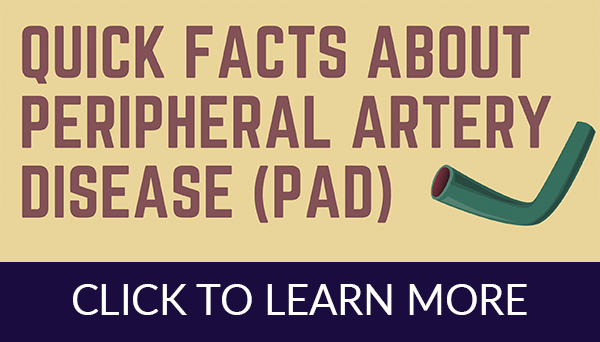 Do you experience leg pain when you walk that is alleviated when you’re resting? You may be experiencing peripheral artery disease (PAD).
Do you experience leg pain when you walk that is alleviated when you’re resting? You may be experiencing peripheral artery disease (PAD).
This common circulatory problem narrows arteries and reduces blood flows in the limbs. It most commonly affects the legs. It can often be treated with lifestyle changes or medications, but surgery may sometimes be needed to expand the arteries and allow blood to flow more easily.
What is peripheral artery disease (PAD)?
Peripheral artery disease (PAD) occurs when the peripheral arteries become narrowed. The peripheral arteries run through the legs, stomach, arms and head. PAD mostly affects the arteries in the legs.
PAD is often caused by atherosclerosis, which is when the fatty deposits build up in the artery walls. It can also be caused by blood vessel inflammation, injury to the limbs, unusual anatomy of the ligaments or muscles, but these causes are less common.
PAD can also lead to other serious conditions. One condition is critical limb ischemia, which begins as open sores don’t heal and lead to tissue death (gangrene). Other conditions are stroke and heart attack.
What are the symptoms of peripheral artery disease (PAD)?
The most common symptom of peripheral artery disease (PAD) is pain in the lower extremities. Most of the time, you may not experience any symptoms or may only have mild symptoms.
Other symptoms include:
- Cramping, pain or tiredness in the leg or hip muscles
- Pain in the leg or hips while walking or climbing stairs
- Pain that is alleviated when resting but returns when walking
- Changing color in the legs
- Coldness in the lower legs or feet
What are the risk factors for peripheral artery disease (PAD)?
The chances of having peripheral artery disease (PAD) increases with certain factors. These risk factors include:
- Smoking
- Having diabetes
- Having high blood pressure
- Having high cholesterol
- Being physically inactive
- Age
- Having a family history of peripheral artery disease, heart disease or stroke
If you smoke, have diabetes or are over age 70, you should be screened for PAD yearly, even if you don’t have symptoms.
What are the treatment options for peripheral artery disease (PAD)?
 When your vascular specialist is creating a treatment plan with you, there are two goals: manage symptoms and stop the progression of peripheral artery disease (PAD). This can be managed with lifestyle changes such as quitting smoking and becoming active.
When your vascular specialist is creating a treatment plan with you, there are two goals: manage symptoms and stop the progression of peripheral artery disease (PAD). This can be managed with lifestyle changes such as quitting smoking and becoming active.
If lifestyle changes don’t help, your vascular specialist may recommend medications to control blood pressure, cholesterol and blood sugar. If these conservative measures don’t work, your vascular surgeon may suggest surgery.
What types of surgeries can help treat peripheral artery disease (PAD)?
When conservative measure fail to alleviate symptoms and stop the progression of peripheral artery disease (PAD), your vascular specialist may suggest angioplasty, bypass surgery or thrombolytic surgery.
Angioplasty occurs when a small hollow tube, called a catheter, is threaded through a blood vessel to the affected artery. Then, a small balloon on the tip of the catheter is inflated to reopen the artery and stretch the artery to help keep it open.
Bypass surgery occurs when a graft bypass is created using a vessel from another part of the body or a synthetic fabric. This allows blood to flow around the narrowed artery.
Thrombolytic therapy involves injecting a clot-dissolving drug into the artery at the point of the clot to break it up.
After surgery, PAD will need to be monitored, but surgery will likely alleviate the symptoms of PAD and help prevent its progression.
Learn more about PAD from Dr. Thompson:
